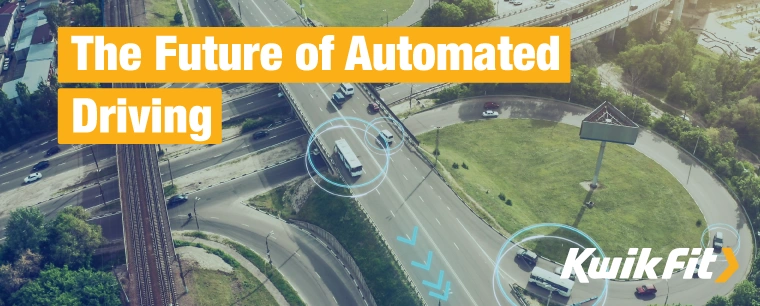The Future of Automated Driving
Jack Dreyer | Thursday 4th August 2022 9:40am

How news & media presents technological innovation in the automotive industry is often unrealistic. Flying & underwater cars (as seen in Hollywood) are yet to become common in real life. However, there are significant steps being made in innovating modern cars. These can be seen especially in the area of autonomous driving.
Automated driving for driver comfort
These innovations not only improve driver safety but also offer motorists enhanced comfort and convenience. One example of this is self-parking technology. On board cameras are positioned in order to give the full picture of the vehicle and the surrounding area. This allows the system to plot the necessary path for autonomous parking. The system takes into account any new factors Ė such as a person walking across the parking area Ė and acts accordingly to avoid danger.
Safety innovations

Many cars are being built with Advanced Driver Assistance Systems (ADAS) which includes systems such as Autonomous Emergency Braking (AEB) and Electronic Stability Control (ESC). Continental have been at the forefront of the latest innovations that are improving the driver experience and making the roads safer. Their Chassis and Safety division is one example of their investment into developing automotive technology. Autonomous Emergency Braking (AEB) is an important step in improving driver safety. It monitors road conditions and automatically applies the brakes if needed. Many driving accidents can be attributed to late braking. Therefore, adoption of AEB technology could help to reduce the number of road accidents.
From automated assistance to fully autonomous cars
The technologies discussed above are currently available in many cars. However, there is some confusion about the future of autonomous driving and progress towards fully autonomous cars. The Society of Automotive Engineers (SAE) published a report which classified the six levels of driving automation. The categories range from Level 0 (no automation) to Level 5 (total automation). The progression from level 0 to level 5 will depend on factors such as public opinion and government legislation. The technology for autonomous cars could be ready as early as 2020 but if the infrastructure and legislation isnít there, it will be difficult for autonomous cars to become widespread.
New developments in autonomous driving

The UK government has implemented procedures for the testing of autonomousvehicles. This Is demonstrated by the fact that the Department for Transport
has set up a Centre for Connected and Autonomous Vehicles which had up to £25
million to invest in businesses developing self-driving vehicles. The Government
was looking for projects which show clear use cases for the technology and the
way that businesses can deliver the service. Public opinion is also an
important aspect of this as people still need to be convinced of the safety of
these vehicles. Car manufacturers, such as Volvo, are also involved in testing
autonomous cars and ensuring that they remain competitive in a constantly
evolving field.
When can we expect a fully autonomous car?
The technology behind autonomous cars is being constantly updated each week. The software behind these vehicles needs to be updated consistently to recognise new road layouts, vehicles and different environments. The level of interaction of these cars with their environment means that in order for them to be safe, constant updates are required. Safety tests are required before the technology is made available to the public. This means that even when the technology is ready, there is still a lot of work to be done before autonomous cars become a common sight on the roads.
Any facts, figures and prices shown in our blog articles are correct at time of publication.
Featured Articles
Is it Illegal to Drive With One Headlight?
Saturday 19th July 2025
Wondering if itís illegal to drive with one headlight? Learn about the safety risks and penalties of illegal blown bulbs and why you should fix them promptly.
Air Con in EVs & Hybrids: Experts Answer Your Questions
Monday 30th June 2025
Does air con drain EV batteries? Can you use the air con while charging an electric car? Find out the answers to these questions & more from Kwik Fitís experts.
Why Is Your Car Making a Noise? Fixes & Tips
Friday 13th June 2025
When your car starts making unexpected noises, it can certainly be quite disconcerting; it may be nothing to worry about, but hereís what you need to know.









